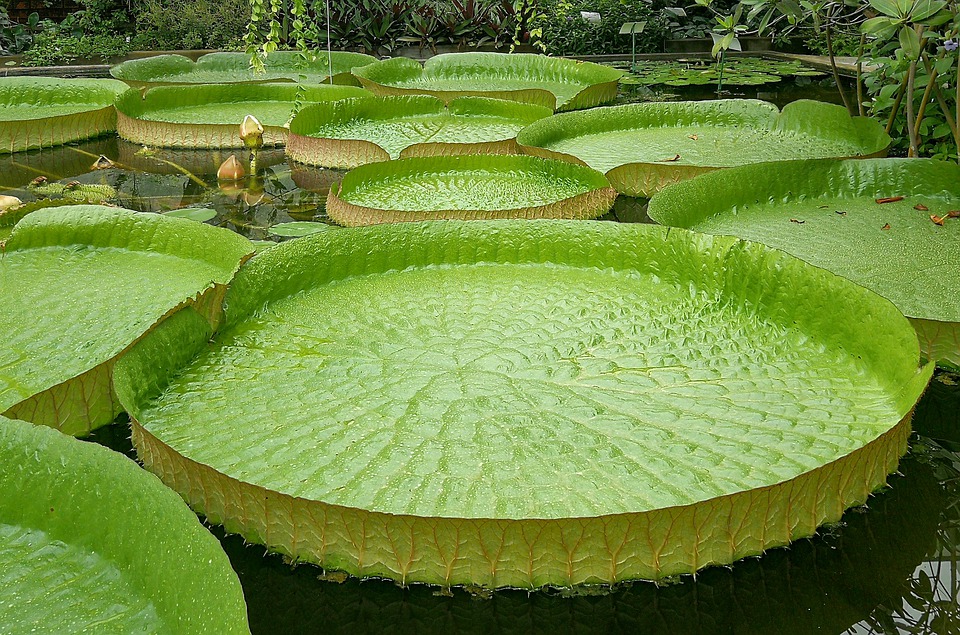The features of giant water lilies
by Ailsa Harvey · 24/11/2019
The floating plants known for their enormous leaves and short-lived flowers

The Victoria amazonica is the largest species of water lily in the world and is native to South America. An individual plant can produce up to 50 leaves in a single season, and it’s these leaves that make it so well known and prized as an ornamental plant.
The huge, circular leaves start off as spiny heads but then rapidly grow at a rate of half a square metre per day until eventually reaching more than 2.5 metres in diameter. The leaf is anchored by a long, submerged stalk, the stem of which is buried in the muddy waterbed below. Not only are the leaves enormous, but they also have distinctive features that make them unique. The surface of the leaf has upturned rims and a layer of wax that repels water, while the underside of the leaf is purple-red in colour and consists of ribs covered in sharp spines.
It is the air that becomes trapped inside the spaces between the ribs that enable the leaf to float and even support heavy items – a mature leaf can hold 45 kilograms of weight. It’s also quite likely that the spines function as protection against any creatures that swim below.
Lily flowers

The Victoria amazonica produces incredible flowers, with each plant producing one flower at a time, each one lasting just 48 hours or so. On the first evening that it opens the flower is female, appearing white in colour and smelling of sweet pineapple. A thermochemical reaction then occurs in the flower, which gives off heat. This scent and the heat attract beetles, which dispose of pollen that they’ve collected from other plants. While fertilisation takes place the beetles find themselves trapped inside the flower as it closes until the following evening.
The next day, the flower changes to male and, as the anthers mature, it starts producing its own pollen. By the time it opens up again that evening it has lost its scent and heat and appears purple-red in colour. No longer finding it attractive, the beetles escape and head towards white flowers on the other plants. Equipped with fresh pollen, the whole process starts again. Meanwhile, the flower left behind
closes and sinks below the water.
This article was originally published in How It Works issue 111, written by Sarah Bankes
For more science and technology articles, pick up the latest copy of How It Works from all good retailers or from our website now. If you have a tablet or smartphone, you can also download the digital version onto your iOS or Android device. To make sure you never miss an issue of How It Works magazine, subscribe today!




